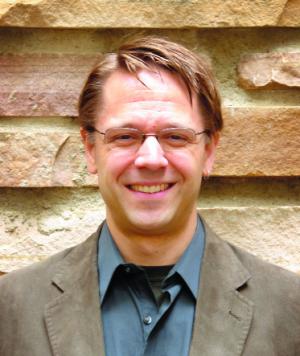 Update (6/15/20):
Update (6/15/20):
This week, an article written in CU Boulder Today about Dr. Bortz's contributions to the Colorado COVID Modeling Team became their top news story.
Original Article (5/25/20):
In March, an interdisciplinary team was assembled by the state of Colorado to develop a model to help inform policy decisions concerning the ongoing COVID-19 epidemic. Associate Professor David Bortz was among those invited to join because of his research in the mathematical modeling of biological systems. Dr. Bortz explained that, as the team was being assembled, there was a consensus that a mathematical biologist was needed for development and theoretical and computational analysis of the compartmental model.
In helping to create the model, Dr. Bortz worked with the epidemiologists to ensure that the most accurate mathematical terms were being used to describe the transmission and recovery processes during an outbreak in a population. Additionally, Dr. Bortz developed the code to compute the basic reproductive number for the age-structured model, as well as to estimate the uncertainty around the overall case count projections. For additional information about the project, please see the Colorado School of Public Health’s webpage on the COVID-19 modeling team.
This model has been critical for understanding the possible future trajectory of the COVID-19 crisis and the responses that are critical in slowing the spread of the virus. Dr. Bortz explained that ”the decisions made by the Governor’s Office and the Colorado Department of Public Health and the Environment have been strongly data-driven with a focus on understanding the model predictions about both the needed number of ventilators and the timing for the initiation and duration of the stay-at-home order.”
When asked where we go from here and where the model goes from here, Dr. Bortz explained that “the project is ongoing as we investigate the impact on transmission rates due to current different distancing and mask recommendations. We are also studying alternative policies, such as targeting recommendations to specific vulnerable groups.”
Dr. Bortz highlighted that although a vaccine or antiviral drug is not ready, there are still actions that everyone can take in keeping themselves and those around them safe: “it is critical that everyone continue to follow the non-pharmaceutical mitigation strategies (hand washing, distancing, and wearing masks in public, etc.). That is the biggest ‘knob’ we have currently, and each of us can do something about it.”
Although we’re in the middle of a pandemic currently, it’s important to look towards the future and how future epidemics can impact the world as a whole. Dr. Bortz noted, however, that “the preparedness for future epidemics at the scale of society is one of the most challenging mathematical projects we have. I think that putting together different aspects of this research - optimizing health care, distribution channels, travel networks - would be a big achievement that could serve us well in the future.”
Congratulations and thank you for your work Dr. Bortz!

